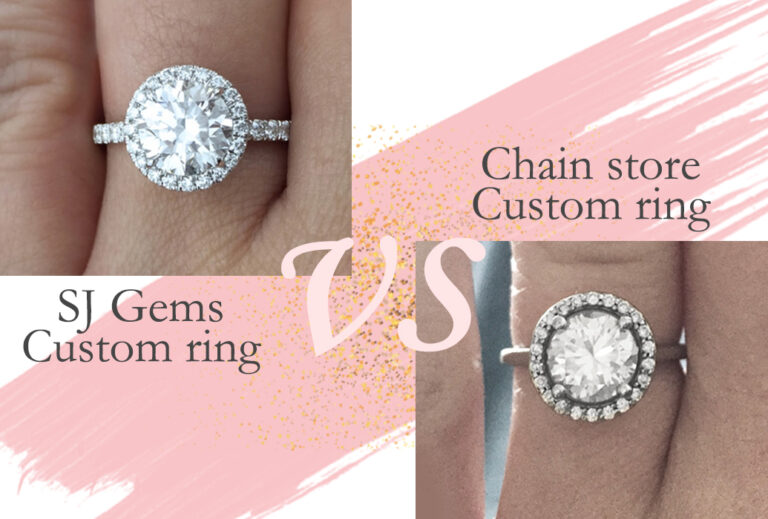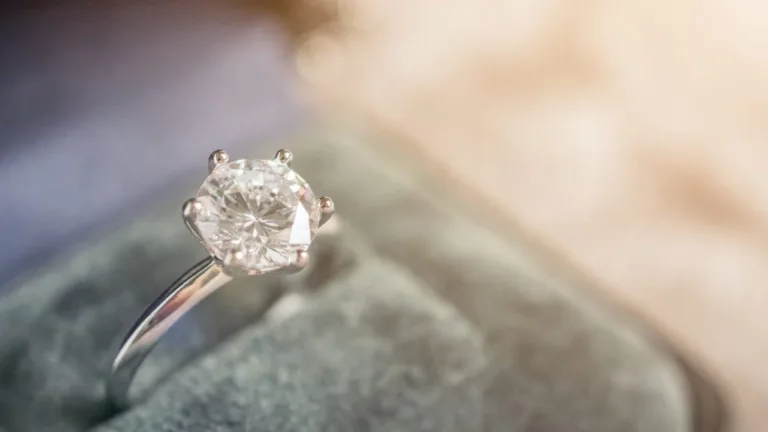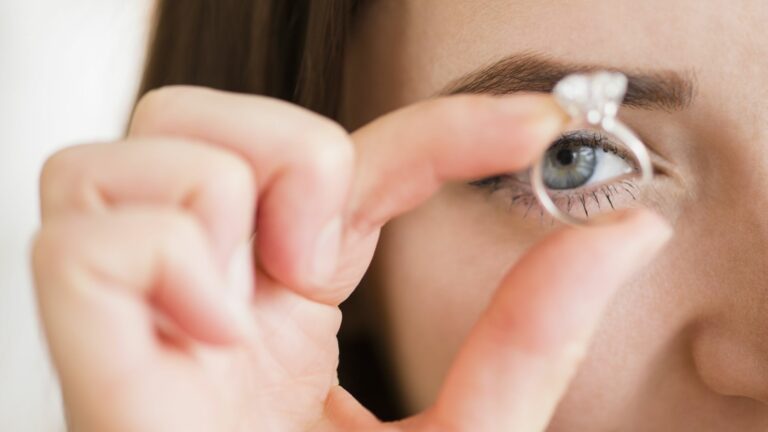5 Types of engagement ring settings
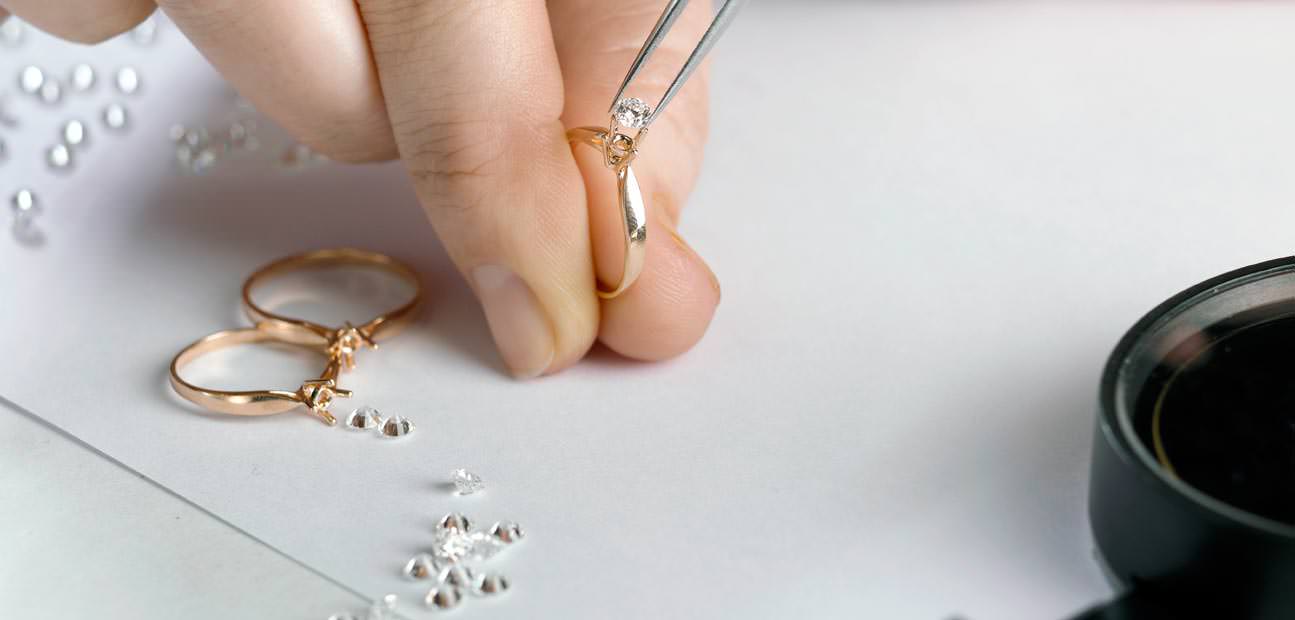
Engagement ring setting types can be overwhelming and confusing, because there are so many to choose from. The specific setting of your diamond or gemstone can either complement or subtract from its beauty! This might bring up many questions, such as: What are ring setting types to begin with? In this guide, we’ll help you learn the basics of ring settings. The more you know about them, the better you can narrow down the options.
What are ring settings?
Engagement ring settings refers to how the main stone is secured or set on the actual band. According to a study by weddingwire.com, women find the setting to be the most important feature of an engagement ring (men tend to focus on the quality of the stone). The type of ring setting plays a big role in the look and feel of the ring and may be the first thing you notice when you look at an engagement ring. You’ll have to shop around and look at a variety of rings to figure out the engagement ring setting (and stone cut!) that best suits your taste.
Here is our breakdown of the different setting types:
Prong ring setting
When it comes to designing a classic engagement ring like the solitaire, the prong or claw setting is a popular choice. In this classic setting, two or more prongs wrap around the crown of a stone to secure it in place. Also known as a claw setting, this mounting style minimizes the amount of metal used, allowing more light to pass through a diamond or gemstone. Four prongs are most desirable for setting princes diamonds and other cuts with delicate corners.
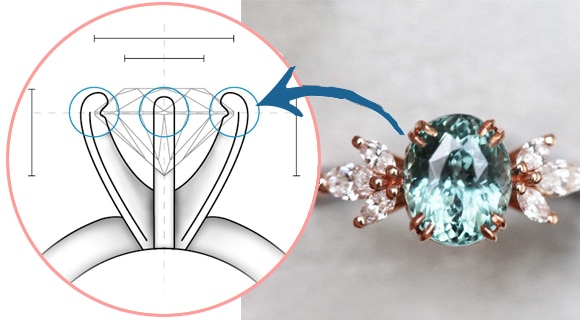
Tip: The extra light from this setting is a great way to make lower colour diamonds and gems more brilliant.
Channel Ring Setting
A vertical metal wall creates a smooth channel to secure the diamonds or gemstones. With no metal in between the stones nestle next to one another. This setting can hold gems, generally of the same size, in a row, locking them in place with girders on each side. The row of stones can continue around the entire circumference of the ring and since the continuous row of stones visually symbolizes eternity, it can be an obvious choice for a wedding ring.
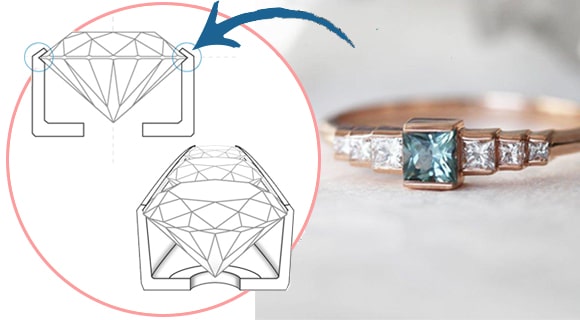
Tip: This setting provides extra protection for the stone and is a great choice for everyday wear.
Bar Ring Setting
Bar settings secure gems on two sides with vertical metal bars, leaving ample space for light to pass through the diamonds. While bar settings are similar to channel settings, they leave the gem exposed on two sides. A bar setting provides stability while still allowing adequate light to pass through the stone, yet they are secure. Use a bar settings mainly with round or baguette stone shapes.

Tip: This setting leaves the gemstone exposed on its sides and should not be used with “soft” gems
Pavé Ring Setting
In this dramatically elegant setting type, diamonds or gemstones are set low and very close together with tiny beads. The surface of the ring will appear to be encrusted with stones for a brilliant effect. It’s usually a lot of small gems that are set together on the ring, giving the overall impression that they are ‘paved’ along the band. The metal is then formed in a way that it creates tiny beads securing the diamonds in place.
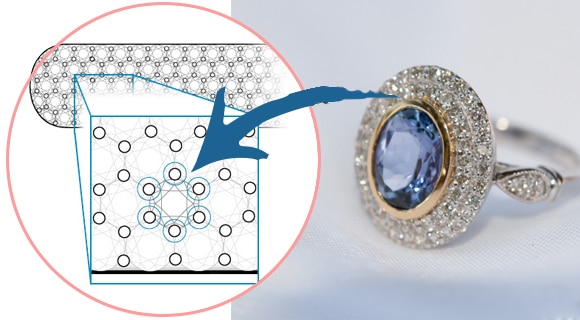
Tip: This setting type offers extra “sparkle” to a dull centre stone.
Bezel Ring Setting
The bezel setting encircles the centre stone with a thin metal rim, custom-made to hold the stone tightly in place. The bezel holds the gemstone more securely in place than prongs. This makes the bezel ring setting one of the most durable of the engagement ring styles. It’s a great choice for people looking for a ring that won’t snag and will adequately protect the centre stone.
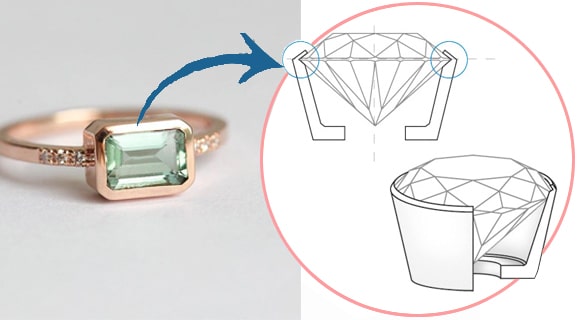
Tip: This setting is best suited for active lifestyles.
How to choose an engagement ring setting
The engagement ring settings type is the foundation of your entire design. Selection largely depends on personal style and preference along with the wearer’s lifestyle. Some settings lend better to active folks or those who do work with their hands, while other designs are more intricate with high-set stones. Realistically consider how often you’ll clean and maintain the ring as some settings require more upkeep than others. Also take into account the type and look of the center stone.
You can use settings in clever ways to hide or accentuate certain features of your stone. Ultimately, you are going to wear your ring everyday and it should never stop making you feel special!
If you’re interested in selecting an exquisite gemstone for your ring settings, get in touch with us at SJ Gems. We can help you source diamonds and coloured gemstones and ensure you’re not overpaying. Our service includes a one stop solution from selection to manufacture. Get your free quote from SJ Gems today!

